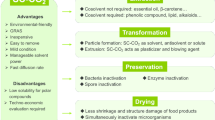Conclusions
No contaminants, oxidation products, or differences in chemical composition or structure were found in any sample of PROH regardless of batch, age, or storage method. Concerns surrounding the longevity of PROH are unfounded.
Similar content being viewed by others
References
Trounson A, Jones G: Freezing of embryos: Early vs later stages.J Assist Reprod Genet 1993;10:179–181
Windolz M (ed): The Merck Index: An Encyclopaedia of Chemicals, Drugs and Biologicals, 10th ed. Merck & Co., 1983
Pouchert CJ: The Aldrich Library of NMR spectra, 2nd ed. Milwaukee, WI, Aldrich Chemical, 1983
Boutron P, Kaufmann A: Stability of the amorphous state in the system: Water-1,2propanediol. Cryobiology 1979;16:557–568
Lassalle B, Testart J, Reanard JP: Human embryo features that influence the success of cryopreservation with the use of 1,2-propanediol. Fertil Steril 1985;44:645–651
Author information
Authors and Affiliations
Rights and permissions
About this article
Cite this article
Mallidis, C., Phelan, D., Coles, M. et al. Does the composition of propane-1,2-diol alter over time?. J Assist Reprod Genet 13, 53–55 (1996). https://doi.org/10.1007/BF02068870
Received:
Accepted:
Issue Date:
DOI: https://doi.org/10.1007/BF02068870




